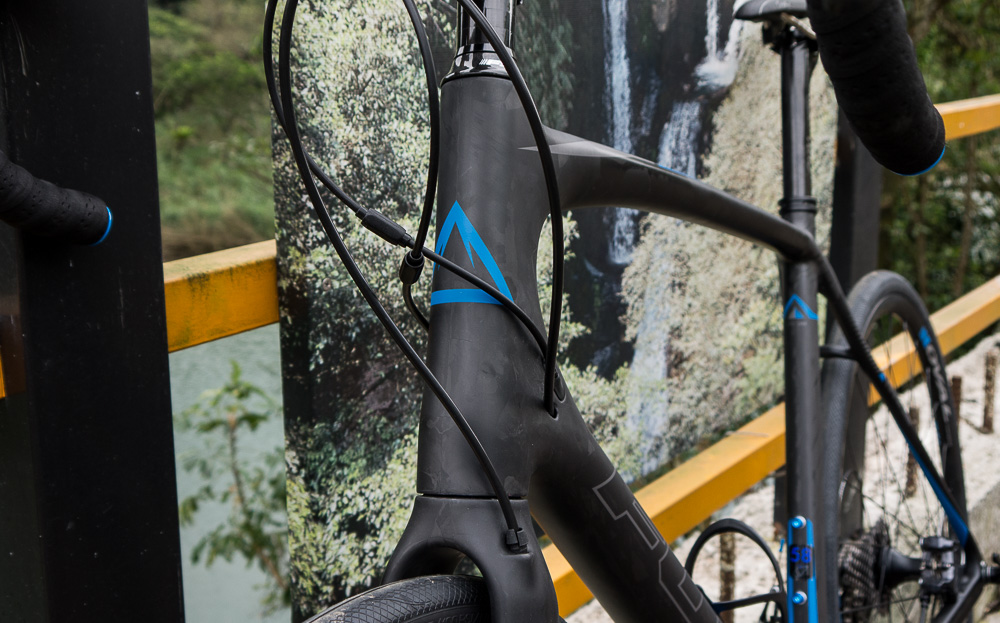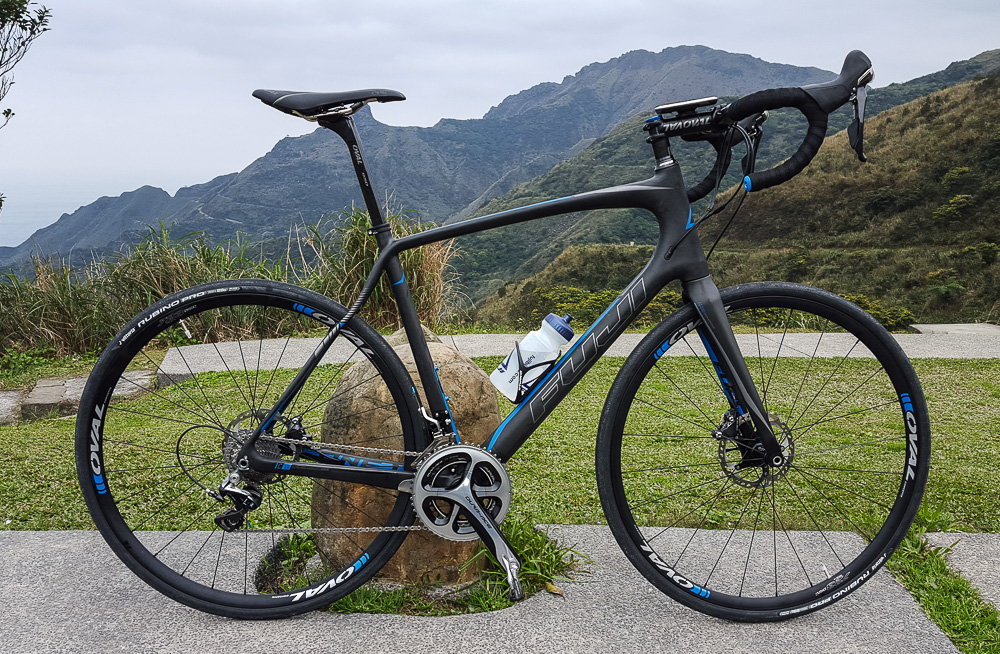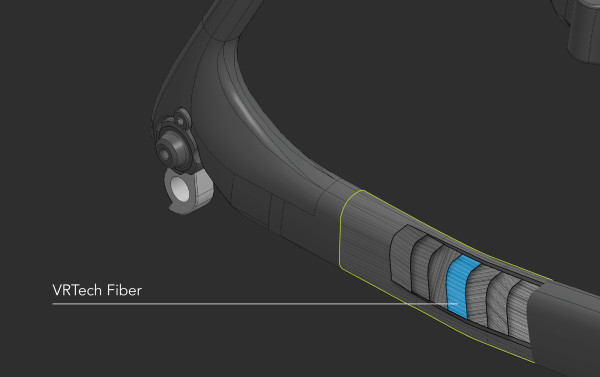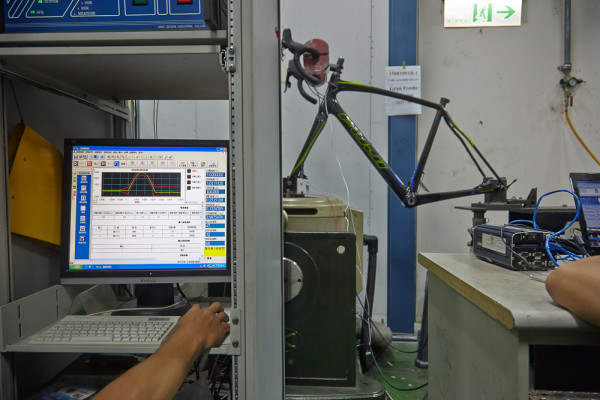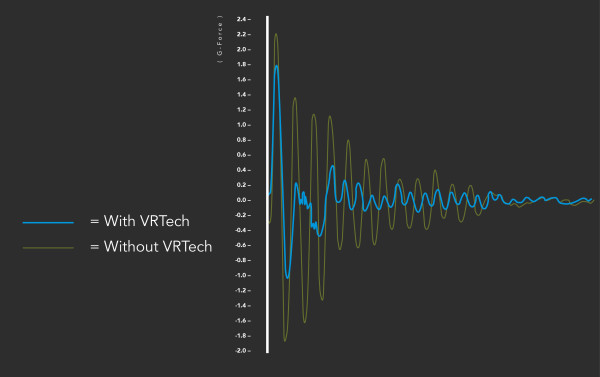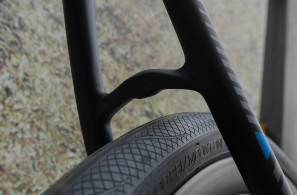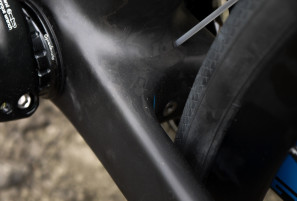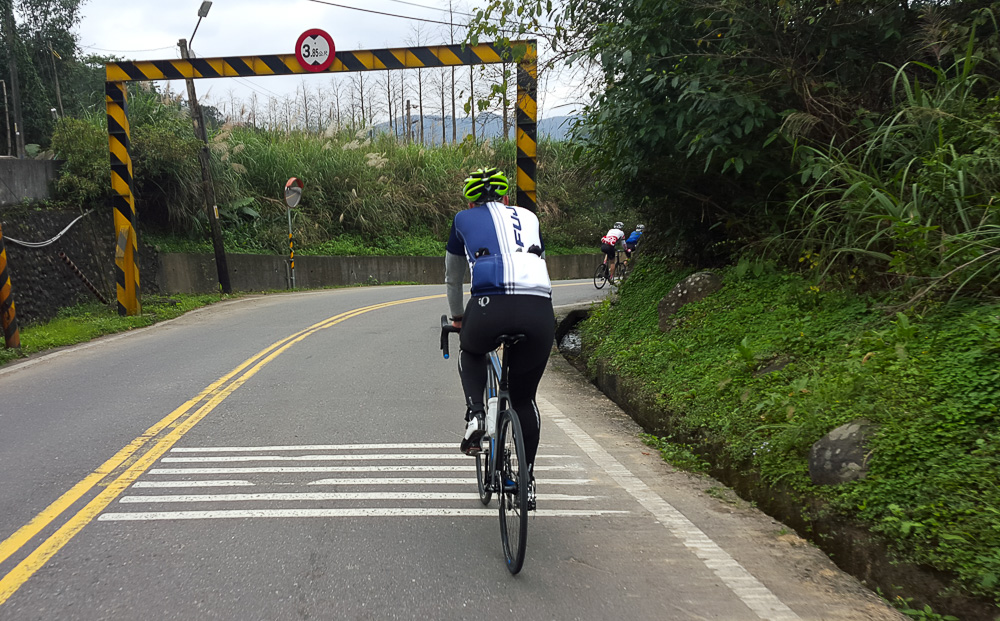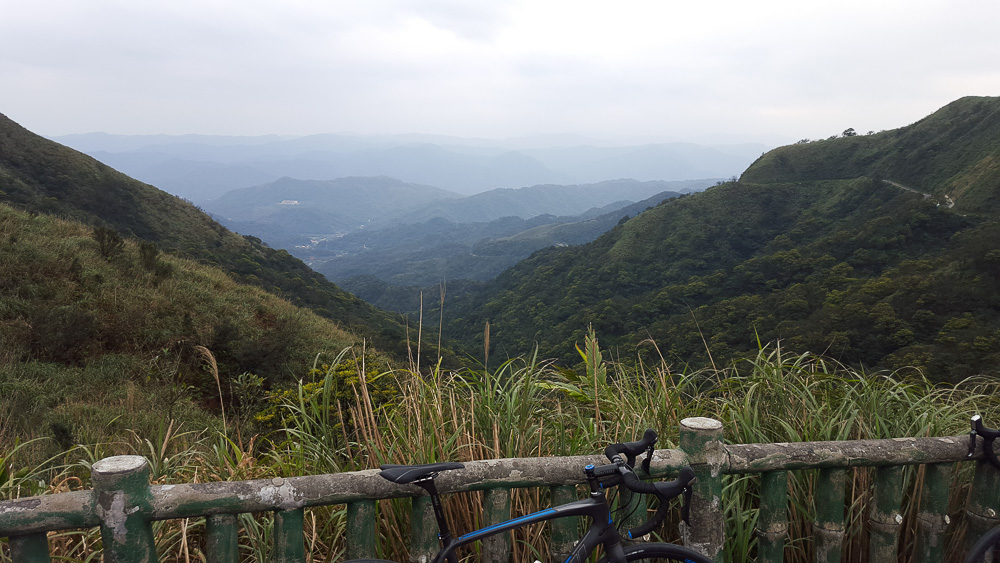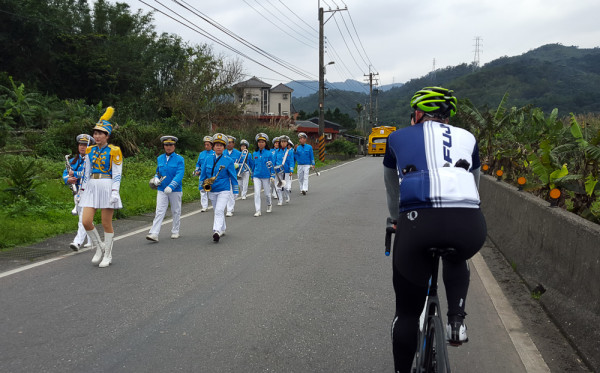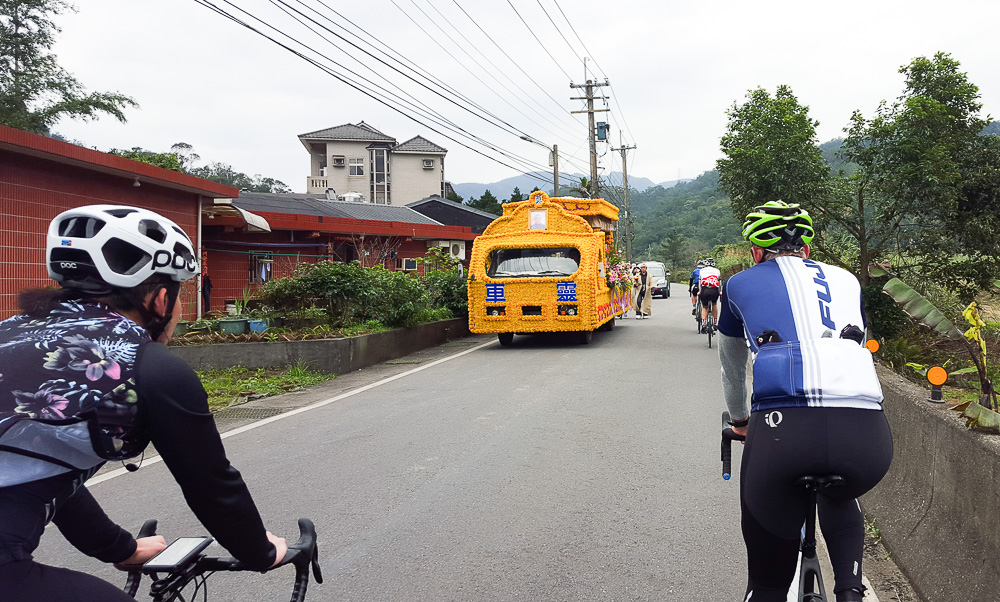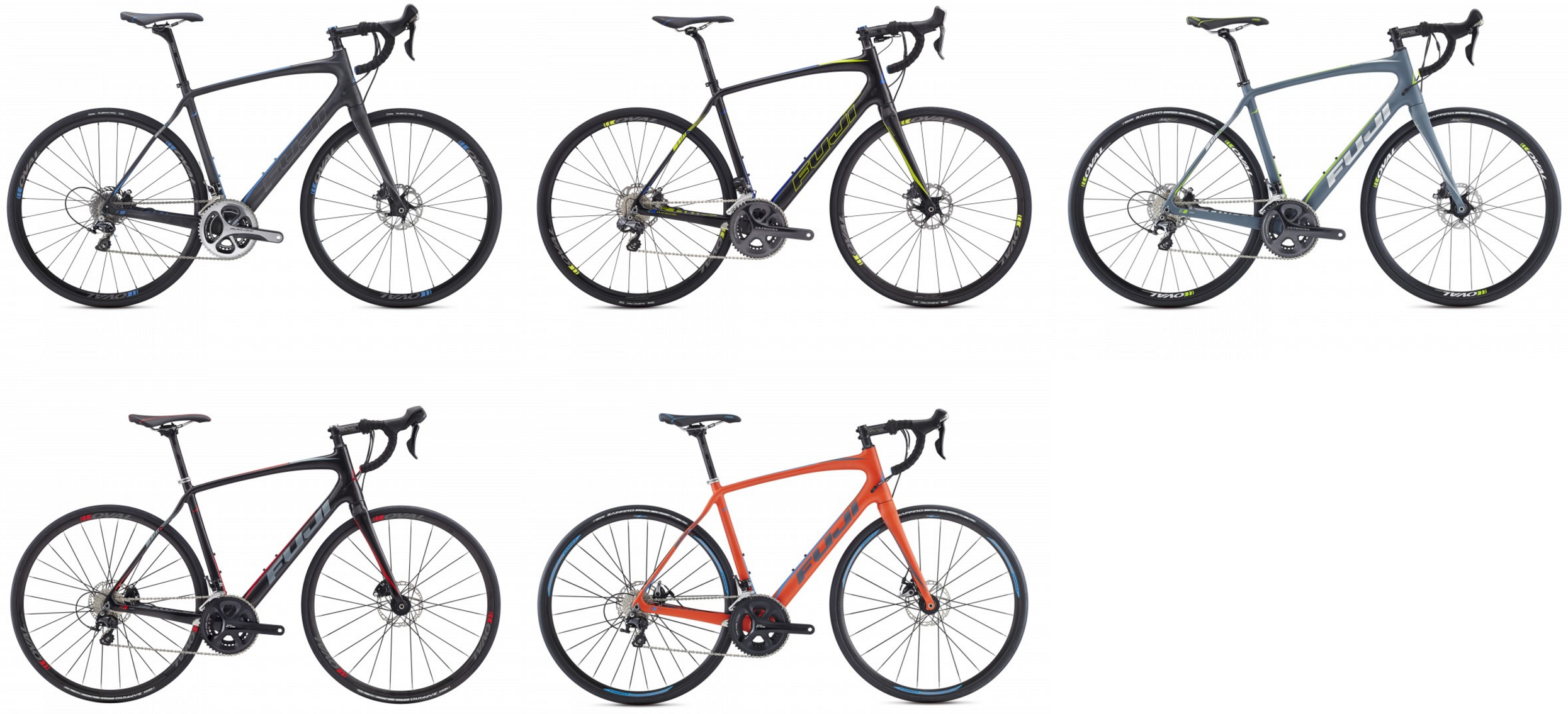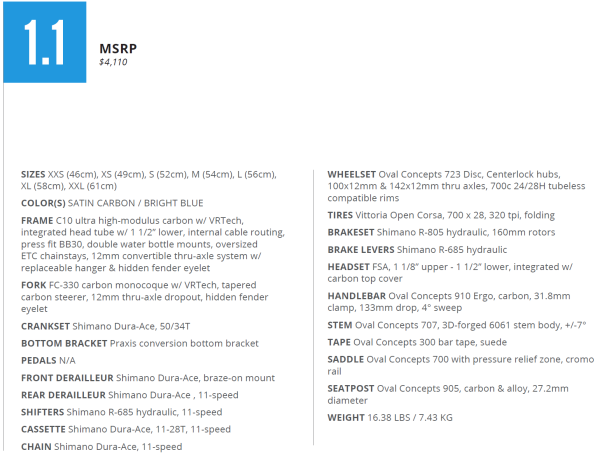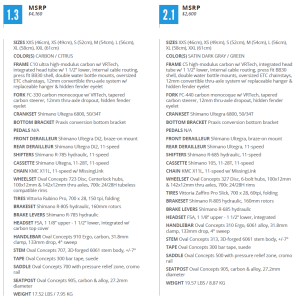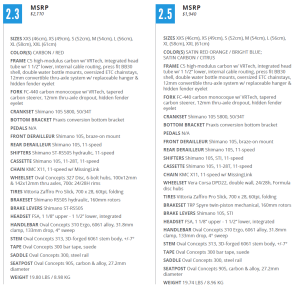Fuji said they had something big, worthy of a grand pedal from the Taiwanese mountains to the beautiful seaside town of Juifen. The ride is their all-new endurance bike, the Fuji Gran Fondo.
Roll through the mountains for an inside look at the considerable amount of tech -things like vibration reducing VRTech woven carbon, gobs of tire clearance, and lots more- that make this a distance taming, road smoothing machine…
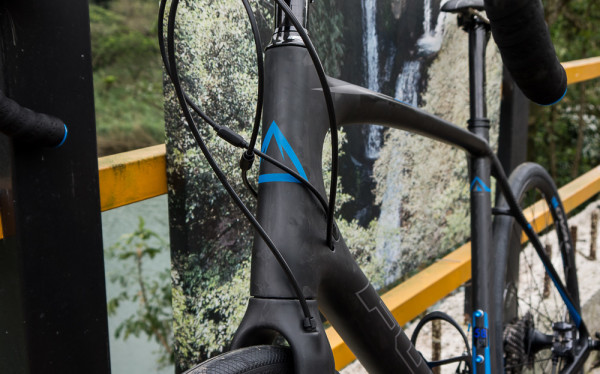
Fuji set out to create a bike made for those who desired a much less jarring ride but without sacrificing the performance of a race-caliber bike. Before scoffing at the importance of a smooth ride, let me share an old comparison I used to tell customers back in my shop days: If you were going to spend 3 to 5 hours driving in a car somewhere (just sitting, no pedaling), imagine how you would feel at the end of the trip had you driven an old Jeep or a Cadillac. Truth is, vibrations cause a lot more fatigue than most people think and when you’re the motor, conserving energy in every way possible is important.
Fuji’s Gran Fondo starts off with their new “Endurance Geometry”. A tall head tube get’s you sitting up a little more and open’s up the angle between your torso and thigh, letting those with less hip flexibility have some extra room.
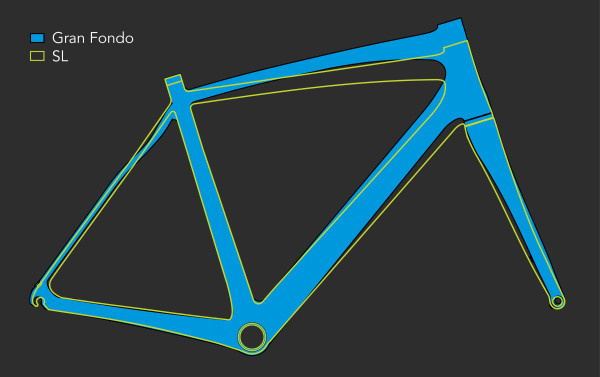
Seen here compared to their race-ready SL’s geometry, the chainstay length, wheelbase and seat angle stay relatively the same, giving it similarly responsive handling, just in a more comfortable position.
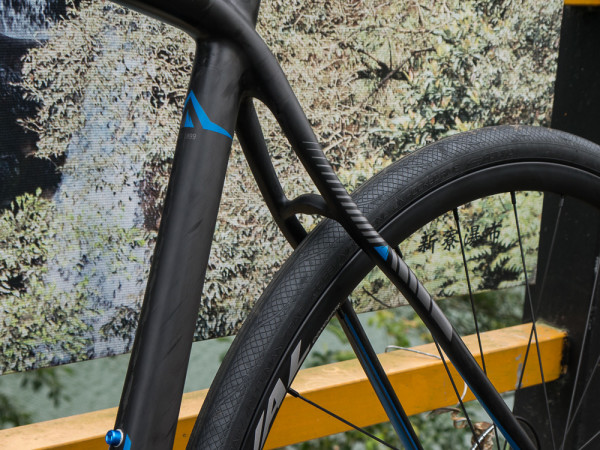
Though the Gran Fondo shares the same dimensions as the SL aside from the headtube height, they put a slight bend in the seatstays to re-direct impacts and some vibrations away from the rider.
Their real solution to knocking down vibration is VRTech. Fuji’s “Vibration Reduction Technology” is a natural fiber treated with polyurethane and placed within the carbon’s layup. Depending on whether it’s in the seatstay, chainstay or fork legs, they use one or two layers of it. The fibers do not absorb impact, rather, they filter out high-frequency vibration significantly. You’ll still feel bumps, but mitigates the road buzzzzzz and vibration that slowly saps your energy.
To test this, they hooked up frames with and without VRTech fibers to accelerometers at the stem and hub areas. They performed tests using different frequencies of vibration as well as dropped the bike from a fixed distance and measured the difference in the vibration transferred to those key areas.
Shown the graph above, they found that a carbon frame with VRTech fibers reduced vibration by a whopping 24.6% over one with out the VRTech fibers. That’s a pretty big claim. And the bikes rode really nice, but surely the reshaped stays and 28mm tires surely had something to do with it. BUT WAIT…
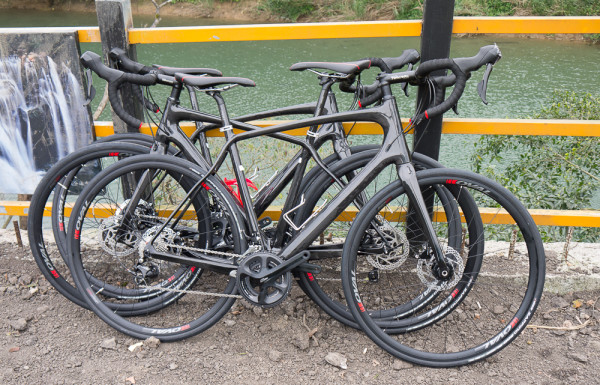
What are these non-stickered bikes piled up over there? Prototypes? Well, not really. Fuji went to the trouble to make a few frames using the same molds but missing the VRTech fibers. I got to do a back to back comparison between the two different frames, and after doing a long ride hitting sections of the road that would definitely cause vibration, I literally giggled regarding how much more pronounced it was on the non- VRTech frame. Bumps… well, I couldn’t feel much difference there, but that isn’t what it’s designed for.
Good on Fuji for putting a little proof in the pudding.
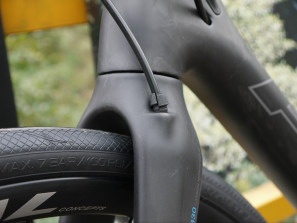
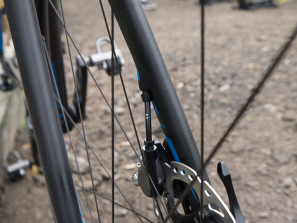
The VRTech impregnated fork gets internal cable routing for a clean and simple look. The VRTech only adds about 3.4 grams per tube for a total of about 24 grams across the frame.
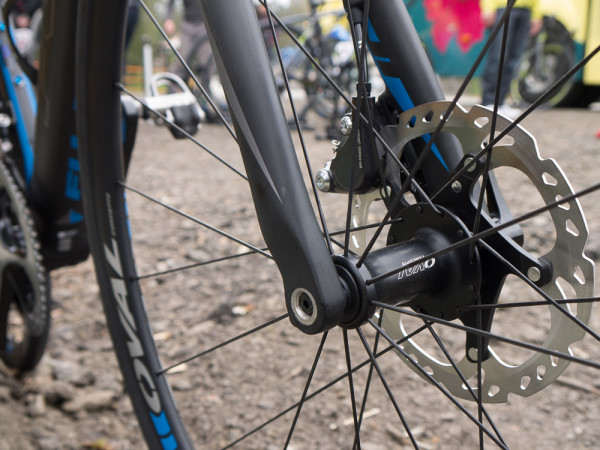
Speaking of forks, Fuji went with a thru-axle, opting for the more road-specific 12mm. The decision to go 12mm was to save a bit of weight, and since companies like Shimano are jumping on board with the 12mm option, wheel spec options should be abundant.
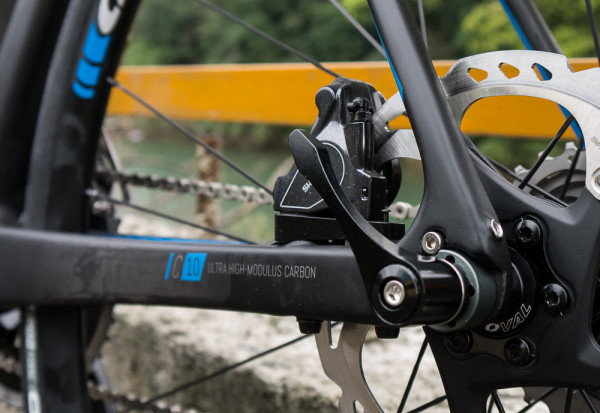
We also expect to see a thru-axle out back these days, too, but there is so much more going on here. First, Fuji ran with asymmetrical chainstays to better counter the disc brake’s forces. The bolt holes on the back of the dropout are fender mounts. Fuji wanted this bike to be flexible so you could take it about anywhere set up the way you wanted it. That other bolt sitting atop the thru axle…
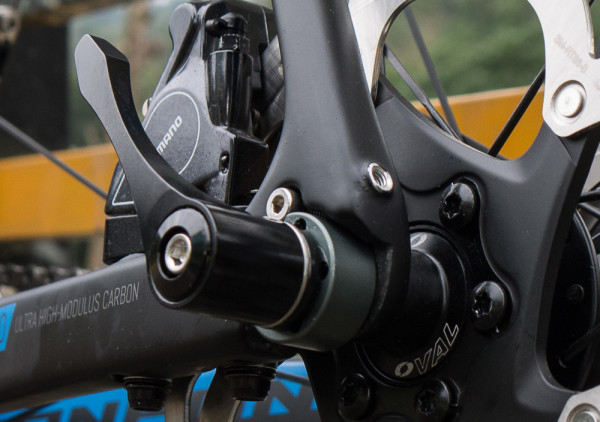
…holds the hardware in place. It’s a convertible thru-axle so you can swap out the 12mm for a QR. Perfect if you have another wheel laying around worthy of using with QRs.
Fender mounts are also tucked under the seatstay bridge and behind the chainstay yoke. Though the bike comes with 28mm tires, you can fit 30mm WITH fenders and most 32’s without.
Like many of their carbon models, the Gran Fondo also gets a different carbon layup for each size so the bike performs correctly in each size. The 1 series will have their high modulus C10 carbon fiber and the 2 series will have their C5 carbon to keep prices in check.
FIRST RIDE IMPRESSIONS
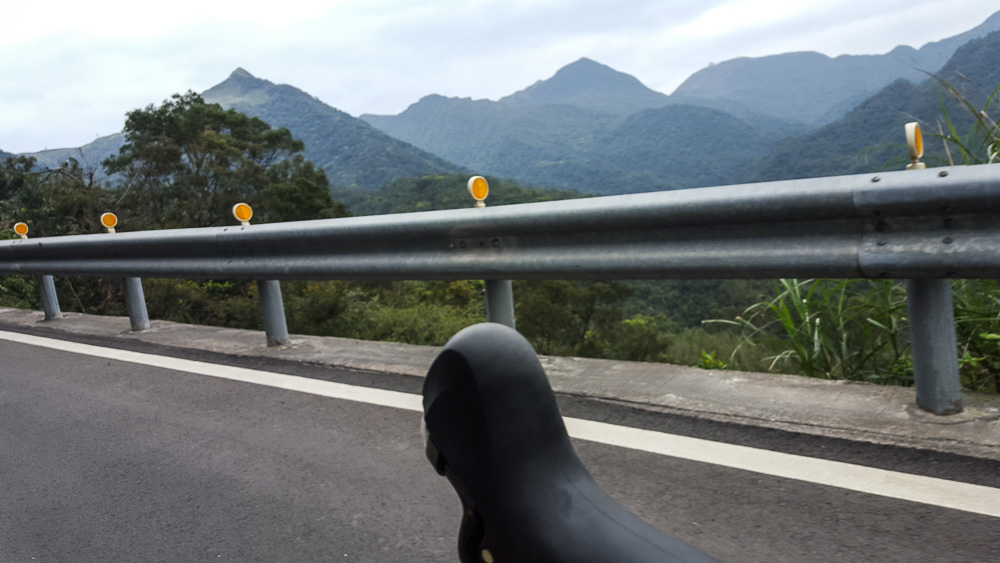
Those mountains in the background? That is where we were headed. We did some long climbs, very technical descents, and some pretty rough roads when passing through various parts of the little townships. I’ve spent some time on the Fuji SL as well as other high performing road bikes, and I cannot say I missed much of their performance aspects in the Gran Fondo. It might have not been as snappy under hard fast acceleration, but for a bike like this, you’d be splitting hairs. Coming down the mountain, the bike felt stable and the brakes were super easy to modulate.
As mentioned, the bike rode really nice and noticeably smoothed out the ride. It had way too many spacers under the stem for my taste, but decided to let it be and see what I thought. After I got used to it, i t was great in that relaxed sorta way. That is until we started descending… and when I say descending, I mean blind hairpin turns. I was having to force myself down pretty low by bending my elbows to get my center of gravity lower. Removing spacers is an easy fix, though, so it’s not a knock against the bike, just the setup I didn’t bother changing.
Overall, this bike was a pleasure to ride while still performing like its more competitive SL and Transonic bikes. Here’s a few pics from our test ride…
Steve Fairchild, Fuji’s Road Product Manager happily rides over some rumble strips bellowing “there ya go… hit these”!
ASI, the parent company of Fuji, Kestral and SE Racing, was well represented by none other than company president Pat Cunnane on today’s ride.
There is a little area waaaay down there where we started. The views were stunning and a good proving ground for such a versatile bike.
During an easy section of the ride, we rode up on what we now believe was a funeral procession. It was pretty cool to happen along such a pretty site and the effort that was made to honor someone.
Huge thanks to Simon and company for dragging us around their stomping ground. That ride is worth going to Taipei a day early every year!
SPECS AND MODELS
Click to enlarge.
